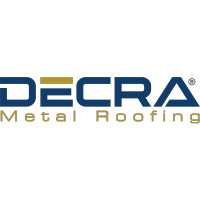URGENT: Some Insurance Companies Now Requiring Homeowners to Replace Aging Roofs Before Policy Renewal! Learn More
Common Roofing Terms Used in Alabama
As you start working with a roofing contractor for your roof replacement, you may hear industry-specific terms related to your project. Continental Roofing's comprehensive roofing glossary will help you become familiar with common terms, helping take control of your roofing project!
A
Actual Cash Value (ACV) The amount of funds equal to the replacement cost minus depreciation of the damaged property at the time of the loss.
Algae Discoloration: Algae growth on asphalt shingles can cause discoloration over the lifespan of the roof. Many shingle manufacturers have started mixing algae resistant components into their shingles.
Architectural Shingle: Also referred to as Laminated Shingles, these asphalt shingles contain more than one layer to create extra thickness and a more appealing aesthetic.
Asphalt: A bituminous waterproofing material applied to roofing materials during the manufacturing process.
Asphalt Primer: A thin liquid bitumen applied to a surface to improve the adhesion of self-adhering roofing membranes and to absorb dust.
Asphalt Shingle: A roofing shingle manufactured by covering a fiberglass mat with an asphalt-based coating and adding granules to the surface. These are the most common residential roofing materials, known for durability, affordability, and eas of installation.
B
Base Flashing: A metal flashing used at the base or bottom of a roof-to-wall transition to direct water onto the roof deck and away from the wall. Can be used behind exterior wall coverings like siding or on top of brick used in conjunction with counter flashing.
Base Sheet: A product used during the installation of flat roofing systems. This is the first layer to be installed on the roof deck with self-adhered systems and torch-down roofing.
Blisters: Bubbles that may appear on asphalt shingles after installation, typically caused by insufficient roof ventilation. These imperfections are also commonly confused with hail damage to the untrained eye leading to unsubstantiated insurance claims.
Built-Up Roof: A low-sloped roof system consisting of multiple layers of ply sheets embedded in hot asphalt.
C
Cap Sheet: A granulated surfaced material that is used as the top layer of a low sloped roof system
Catch-All System: Customizable job site equipment used to protect the area surrounding the home during a roof installation.
Closed-Cut Valley: A method of valley installation in which the shingles from one slope extend across the valley while shingles from the other slope are trimmed from the valley centerline. This "closes" the valley so that the flashing is not exposed.
Core Sample: This non-destructive method involves extracting a small sample of the existing roofing material. This helps us to identify the roof's substrate (e.g., wood, concrete, or metal), and existing layers of the current roof system.
Counter Flashing: The metal flashing used at a roof-to-wall transition. This flashing is attached to the vertical surface of an exterior wall, usually brick. By cutting a groove in the brick, the top edge of the flashing is counter-sunk into the wall to prevent water from going behind the base or step flashing.
Course: A row of shingles or roll roofing running the length of the roof.
Cricket: A peak constructed behind a chimney to prevent water build up on the backside of the chimney. Most building codes require these on any chimney wider than 36".
Curb: A raised frame that is attached to the roof of a building and designed to support roof-mounted equipment like skylights and hatches.
D
Decking: Also referred to as sheathing, this is the surface of the roof that is installed over the framing members. On residential buildings, this is typically constructed with plywood or OSB and is what the roofing materials are attached to.
Depreciation: The loss of value over time due to factors such as age and wear. Insurance companies employ both Recoverable and Non-Recoverable depreciation when it comes to insurance claims.
Dimensional Shingles: Another name for Architectural or Laminated shingles.
Dormer: A framed window projecting through the sloping plane of a roof.
Drip Edge: Metal edging that is installed at the eaves and rakes of a roof. This prevents water from running behind the facia board and causing damage to the underlying construction.
E
Eave: The horizontal, lower edge of a sloped roof.
Exposure: The portion of the roofing exposed to the weather after installation.
F
Facia: The vertical finished face of a roof eave or rake.
Felt: A fibrous material saturated with asphalt that was used as an underlayment prior to the release of more advanced technologies.
Fiberglass Mat: The core material in an asphalt roofing shingle manufactured with glass fibers.
Flashing: Metal used to prevent water intrusion into a building. There are many applications for this metal on a roofing project including vent pipes, chimneys, roof-to-wall transitions, valley's, etc.
Flashing Cement: An asphalt-based cement used to bond roofing materials.
G
Gable: The upper triangular portion of a sidewall that comes to a point at the ridge of a double sloping roof.
Gable Roof: A type of roof containing two sloping planes on each side of the ridge. Contains a gable at each end.
Granules: Ceramic-coated colored crushed rock that is applied to the exposed surface of asphalt roofing products.
H
Hip: The inclined external angle formed by the intersection of two sloping roof planes. Runs from the ridges to the eaves.
Hip & Ridge Shingles: Shingles specifically made to cover the inclined external angle formed by the intersection of two sloping roof planes.
Hip Roof: A type of roof containing sloping planes on each of four sides. Doesn't contain gables.
I
Ice Dam: Condition that happens at the lower roof edge when melted snow thaws and refreezes on the overhang. Can force ponding water up and under shingles causing roof leaks.
Ice & Water Shield: A roof underlayment membrane with self-sealing properties used to protect vulnerable areas on a roof from and ice and water damage. Also referred to as Peel & Stick in certain regions.
Impact Resistant Shingles Shingles that are designed to be more resistant to impacts resulting from hail storms or falling debris.
Insurance Adjuster: Also referred to as a Claims Adjuster, this is a person who investigates an insurance claim to determine if the insurance should pay for damage to property.
Insurance Summary: A report prepared by a claims adjuster that outlines the scope of work and expected costs associated with an approved insurance claim.
J K
Back to TopL
Laminated Shingles: Asphalt shingles containing more than one layer to create extra thickness. Also called architectural or dimensional shingles.
Lap: To cover the surface of one shingle or roll with another.
Liability Insurance: Insurance that protects homeowners in the case of damage caused to their property or person during a construction project. All roofing contractors should carry sufficient insurance to protect against accidental injury.
Low Nail: Also referred to as a shiner, this is when an installer nails a shingle too low so the nail head is exposed to the elements instead of being covered by the shingle above it.
Low Slope Roof: A roof structure that has minimal pitch. Shingles shouldn't be used for low-slope applications.
Loss Date: Also referred to as Date of Loss, this is the date insurance companies use to determine when a loss to property has occurred.
M
Mansard Roof: A roof which has four sloping sides, each of which becomes steeper (almost vertical) halfway down.
Mineral-Surfaced Roofing: Asphalt based rolled roofing that are covered with granules.
N
Non-Recoverable Depreciation: The amount of depreciation that is deemed ineligible for reimbursement under your insurance policy.
O
Open Valley: Method of valley construction that leaves the valley flashing exposed. Shingles on each side of the valley are trimmed so that they don't extend across the valley.
P
Pipe Flashing: Also referred to a pipe jack, this flashing is used to seal plumbing vent stacks that penetrate the roof.
Pitch: The vertical rise over its horizontal run. Also known as slope.
Ply: A layer of roofing material (i.e., one-ply, two-ply)
Ponding: The accumulation of water after rainfall at low-lying areas on a roof that remains wet when other parts of the roof have dried.
Primer: An asphalt-based primer used to prepare surfaces for bonding with self-adhering asphalt sheets.
Punch List: After a roof project or construction project is completed, this is list of outstanding items that need to be addressed before closing out a project.
Q
Back to TopR
Rake: The inclined edge of a sloped roof over a wall.
Recoverable Depreciation: The amount of depreciation that is deemed eligible for reimbursement under your insurance policy.
Replacement Cost Value (RCV): The full cost to replace your damaged property to new.
RidgeVent A type of attic ventilation cut into the roof deck at the highest point in the roof. RidgeVents are installed over this opening to protect the home from weather while allowing proper airflow in the attic.
Ridge Cap: Asphalt shingles specifically made to cover the peak ridge or hips on the roof. Also referred to as Hip & Ridge.
Roof-Over: A type of roofing project that installs a new roof over the top of an existing system. This is not recommended in most circumstances.
S
Shading: Slight differences in shingle color that may occur as a result of normal manufacturing operations.
Sheathing: The surface of the roof that is installed over the framing members. On residential buildings, this is typically constructed with plywood or OSB and is what the roofing materials are attached to. Often referred to as Decking.
Slope: The degree of roof incline expressed as a ratio of the rise, in inches, to the run, in inches. For example, roof slope of 6/12 has a 6 inch rise every 12". Also referred to as roof pitch.
Soffit: The finished underside of the eaves.
Starter Shingles: Asphalt roofing shingles installed at the eave and rake that protects the joints under the first course of shingles.
Square: A unit of roof measure covering 100 square feet.
Standing Seam: A metal roofing system that has raised seams that rise above the panels flat surface area and conceals the fasteners.
Step Flashing: Metal flashing used to seal a roof at roof-to-wall transitions. By alternating shingles and pieces of step flashing, this method is extremely effective in protecting these vulnerable areas to roof leaks.
Synthetic Underlayment: An underlayment product that is typically made using polypropylene and is used as an alternative to felt underlayment.
T
Taper System: Tapered systems are used on low-slope roofing projects. These systems use rigid insulation boards to add a slight slope to the roof, moving water off the roof edges or to roof drains to prevent ponding.
Tear-Off: To remove an existing roofing system down to the structural deck.
Telegraphing: A shingle distortion that may occur when a new roof is installed over an uneven surface.
U
Underlayment: Asphalt saturated felt or engineered synthetic material installed beneath the roof covering to provide protection during the installation process.
V
Valley: The internal angle formed by the intersection of two sloping roof planes.
Ventilation In terms of roofing, ventilation allows air to flow through the attic space, escaping through roof vents.
Vent Pipe A plumbing pipe that penetrates the roof and requires a pipe flashing to prevent leaking.
W
Waste Factor: A percentage of roofing materials over the actual estimated quantity needed to account for shingle cut-offs during the installation process.
Woven Valley: Method of valley construction in which shingles from both sides of the valley extend across the valley and are woven together by overlapping alternate courses as they are applied. The valley flashing is not exposed.





